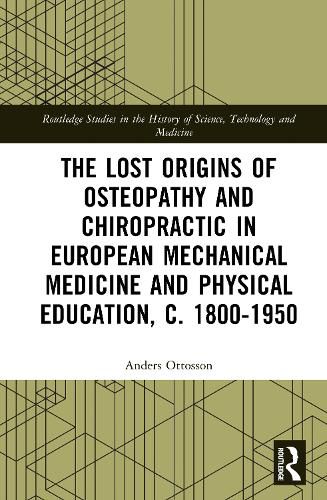Readings Newsletter
Become a Readings Member to make your shopping experience even easier.
Sign in or sign up for free!
You’re not far away from qualifying for FREE standard shipping within Australia
You’ve qualified for FREE standard shipping within Australia
The cart is loading…






This book examines the global history of allegedly scientific "mechanical" cures commonly used to combat internal and chronic diseases and explores how and why the professional demarcation between orthodox and irregular medicine evolved.
Now globally dispersed, the systems of osteopathy and chiropractic are considered as unique pieces of therapeutical Americana with no obvious inspirational counterpart found in the Old World. It is their similar monocausal and biomedically strange etiologies that have given them this status, namely that dislocations and subluxations of joints in the spine were the main source of disease. At the end of the 19th century, when osteopathy and chiropractic materialized in the USA, this was a spectacular claim. Notably, the Germ theory had its breakthrough, yet early osteopaths and chiropractors did not recognize it in favor of their dislocations and subluxations. This book presents a new answer reagarding what formed their etiologies. Through a combination of many unutilised source materials with novel theoretical and methodical approaches, the systems of osteopathy and chiropractic are traced back and related to a seminal yet overlooked 19th century European discourse of so-called mechanical medicine, which also permeated the USA.
Shedding new light on the professionalization and gendering of the modern health care system, this volume will be of value to students and scholars alike interested in the History of Science, Technology and Medicine.
$9.00 standard shipping within Australia
FREE standard shipping within Australia for orders over $100.00
Express & International shipping calculated at checkout
This book examines the global history of allegedly scientific "mechanical" cures commonly used to combat internal and chronic diseases and explores how and why the professional demarcation between orthodox and irregular medicine evolved.
Now globally dispersed, the systems of osteopathy and chiropractic are considered as unique pieces of therapeutical Americana with no obvious inspirational counterpart found in the Old World. It is their similar monocausal and biomedically strange etiologies that have given them this status, namely that dislocations and subluxations of joints in the spine were the main source of disease. At the end of the 19th century, when osteopathy and chiropractic materialized in the USA, this was a spectacular claim. Notably, the Germ theory had its breakthrough, yet early osteopaths and chiropractors did not recognize it in favor of their dislocations and subluxations. This book presents a new answer reagarding what formed their etiologies. Through a combination of many unutilised source materials with novel theoretical and methodical approaches, the systems of osteopathy and chiropractic are traced back and related to a seminal yet overlooked 19th century European discourse of so-called mechanical medicine, which also permeated the USA.
Shedding new light on the professionalization and gendering of the modern health care system, this volume will be of value to students and scholars alike interested in the History of Science, Technology and Medicine.